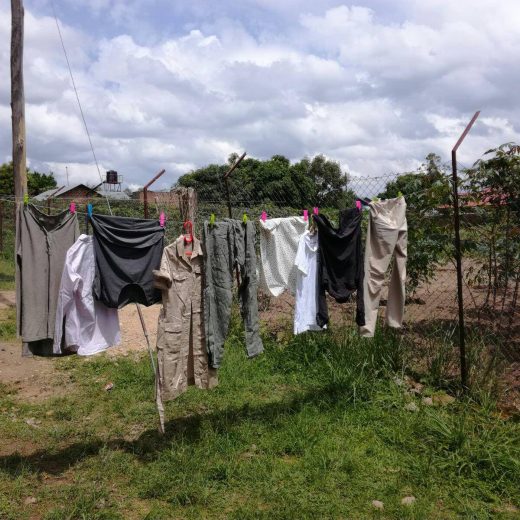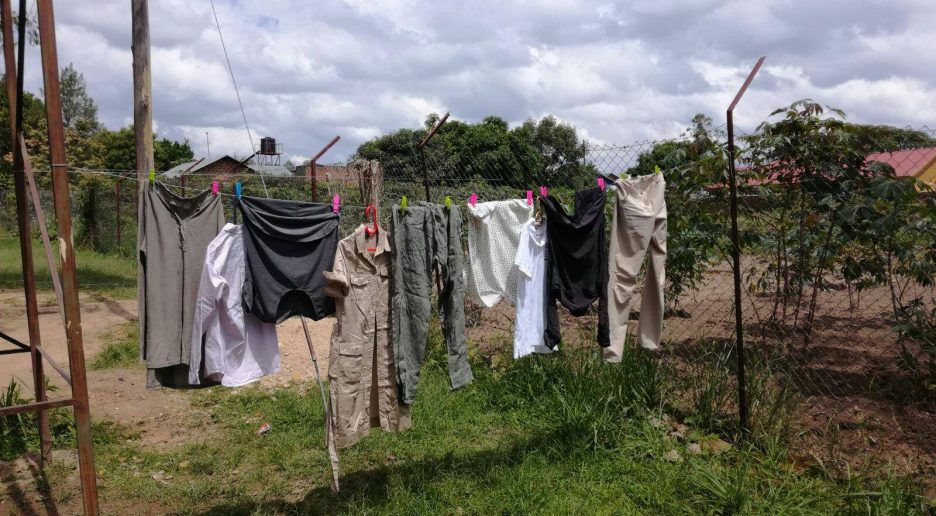Yesterday afternoon my Teachers Without Borders colleague and I decided to go for a run. Taking the boda-boda (a motorbike taxi) from A to B, sitting in the office and eating out a lot had to be balanced. We pulled on our running leggings, sport tops and running shoes, feeling ready to take on all the hills and any amount of red dust, which might come our way.
We walked out our front door, exchanged greetings with the teachers sitting underneath a mango tree on the school compound and made our way towards the gate. One of the school staff was outside, so we stopped for quick chat. She greeted us by exclaiming in surprise “Oh you two look so fresh today! You even have style!” We did not know what to say at first, looking at each other and our clothes, giving a smile saying we have no idea how to take the comment. She must have read the expressions on our faces as she continued to explain: “We have thought here that white people don’t have style. They put on whatever, this here and that there and they don’t care. But maybe not all are the same! Maybe it is that some white people actually care. All you want is to look cool!”
Why is it that White People do Not Have Style?
Why is it that white people do not have style? Why do we not care how we present ourselves, how we are seen as we travel abroad? Or do we care? Are we trying too much? Or are we actually using style, and the lack of it, as a tool to undermine and undervalue the society where we are heading?
Before leaving for our six months in Uganda, we did research online on the culture, climate and appropriate clothing which to take with us (yes, us too). We read blogs telling how West-Nile region is very conservative and thus one must always wear clothing that covers shoulders and knees. We read that blue and black clothing should be avoided, as they will attract mosquitoes and flies. We read that flip-flops and light sandals are not considered as appropriate footwear. We were told that the population is poor and with the over a million refugees from South Sudan, Democratic Republic of Congo and Rwanda, we should be very mindful of our clothing and not to wear sunglasses, in order not to show off.
We listened to the experiences and advice given from different sources. We packed our “safari gear” (khaki coloured clothing, long sleeves, long skirts and dresses) and off we went. And oh how wrong we were. The locals are wearing beautifully design
ed dresses and skirts made of kitenge (African prints and designs). They wear tops showing off their shoulders and skirts which have hemlines ending well before reaching the knees. Flip-flops and sandals are worn by everyone – in the heat they are very sensible shoes. No matter how much money one has to invest on clothing, what ever is bought and worn is done so to look cool and to have style. The times when we have been the most poorly dressed people in the group are many. The times we have felt inappropriately dressed in our safari gear are many.
Dressing Appropriately is a Sign of Respect
Teachers in some schools are still living in tent accommodation. Yet they come to work in crisp and clean clothing, not forgetting accessories. We live in a house with electricity and running water (it runs most of the time anyway) yet we fail to reach the same standards style-wise. It feels disrespectful, uncomfortable and even embarrassing. Our attempts at dressing up appropriately turned against us, resulting in us browsing through online shops in an attempt to have some clothes sent through from Finland (shopping for clothes in Kampala and Arua is another story, requiring a blog post of its own).
The morale of the story is that everyone everywhere just wants to look cool. Be who you are, dress in your own clothes, aim to feel comfortable and most of all, be respectful.




